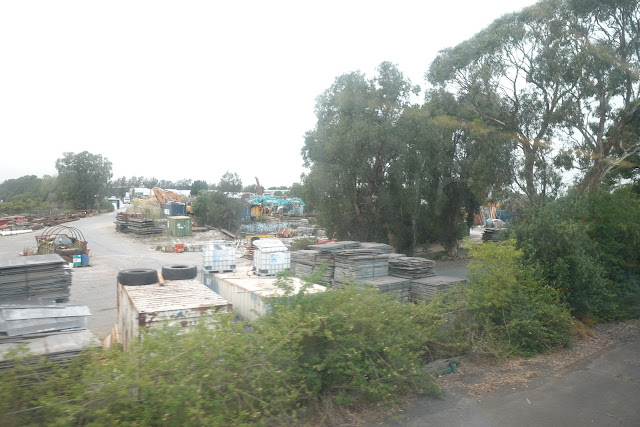We close the year and the decade with a local adventure to mark the closure of a railway line. On the January 5, 2020, the Carlingford Line from Clyde will close to be partially replaced by the Parramatta Light Rail.
This is Sydney's quietest line, a single track branch for most of its length from the industrial centre of Clyde to the northwestern suburb of Carlingford. According to Wikipedia, power supply and signalling issues mean that only a single four car train can utilise the line at a time. Newer Sydney trains run in fixed eight car configurations.
This will be the first and last time I traverse the Carlingford Line in its current configuration. The weather of the day is certainly appropriate for an ending, the brown smoke haze lending an apocalyptic air to proceedings.
I drive to Padstow and catch the T8 line to Central, followed by the T1 towards Parramatta and Penrith. The historic homes of the Inner West give way to industrial complexes, rail storage yards and town centres reflecting the diversity of more recent immigrants.
The Carlingford Line begins at Clyde, its three island platforms topped with art deco style red brick station buildings linked by an overhead bridge, which I hurry across to reach the train waiting at platform 1. The four car Millenium train sits with doors open.
I'm not the only rail fan catching this train. I can see a few others, young, old, with cameras and phones out, snapping away. I retreat inside, uncertain at the departure timetable.
The beep-beep-beep of closing doors sounds and, with a hum, we slowly crawl out of the station and curve northwards away from the other lines heading west. A railways maintenance depot sits in the gap of the Y between the sets of tracks and we cross what is probably the best known remaining level crossing in Sydney, over busy Parramatta Road.
Also running beneath us is polluted Duck Creek. We pass the decaying building sign of Bio Veterinary, then Big Al's Wholesale Cars with its yellow Mini-Moke on the roof.
It's only a short distance to our first stop, Rosehill, serving the Rosehill Racecourse. The horses aren't running today and the platforms stand empty of the crowds for which they run special train services.
A little further along on the other side there's one of only three branches of the American Hooters restaurant chain. These kinds of "family restaurants" have become rare in Australia. I've never dined there.
The line now becomes single track and the short distances between stops feel almost tram like already. Next is Camellia, an industrial area looking rather worse for wear. This is another perspective on what we saw from the Parramatta ferry, for after Camellia we are crossing one of the low bridges across the Parramatta river.
To our left is the pleasant looking University of Western Sydney Parramatta Campus, served by Rydalmere Station, distant from the ferry terminal of the same name.
Then comes Dundas, its historic wooden station building overshadowed by modern residential towers.
We are now heading uphill through suburban areas giving passengers an intimate view of neighbourhood lives. Over busy Kissing Point Road, then winding up to Telopea Station. The cluster of tiny shops behind the station appears to be the first view of anything approaching a local commercial soul.
Beyond Telopea, a grassy park runs alongside the track for quite a distance. A thin man, his shirt rolled up to expose a taught belly, exercises his kelpie dog. There are views beyond across to the east of Sydney as we rise towards the top of the hill.
It feels too soon as the train comes to a final stop at the terminus of Carlingford. Just a single track abruptly ending in a wooden buffer a few metres beyond the platform. To one side, the rusty corrugated iron roofed sheds of the Producers Cooperative are dwarfed by the new apartment block towers beside it. On the other is a station carpark and a few small shops up the hill. Carlingford proper is further away, clustered around the Cumberland Highway.
Passengers mill around snapping photos of the train. Families boarded, ready for the journey towards the city or Parramatta. Twelve minutes later I too am heading back down the way we came, sitting on the opposite side of the train this time, trying to take in as much as possible.
When we arrive back in Clyde I wander around, find a display of the old wooden stopping boards inside a station building. The brown skies paint the surrounds of the station in a harsh light, abandoned and silent in the Sunday post-Christmas shutdown period.
The Carlingford Line may not be the most scenic or interesting railway line in Sydney, but it has its own charms, a rare branch line on this busy network. Any train line closure saddens me, but at least this one will be partially retained in a different form. Next year it will be time for me to celebrate the opening of new light rail systems instead of mourning the old.







































Comments